A great meal in a restaurant can leave good memories. A great meal in an exceptional environment goes beyond that – it makes you not want to leave. Be it attentive lighting, surprising details or tasteful furniture, the interior design of an establishment is vital in reflecting the soul of a cuisine. BY: LUO JINGMEI
Il Ristorante Niko Romito, Bvlgari Hotel Tokyo
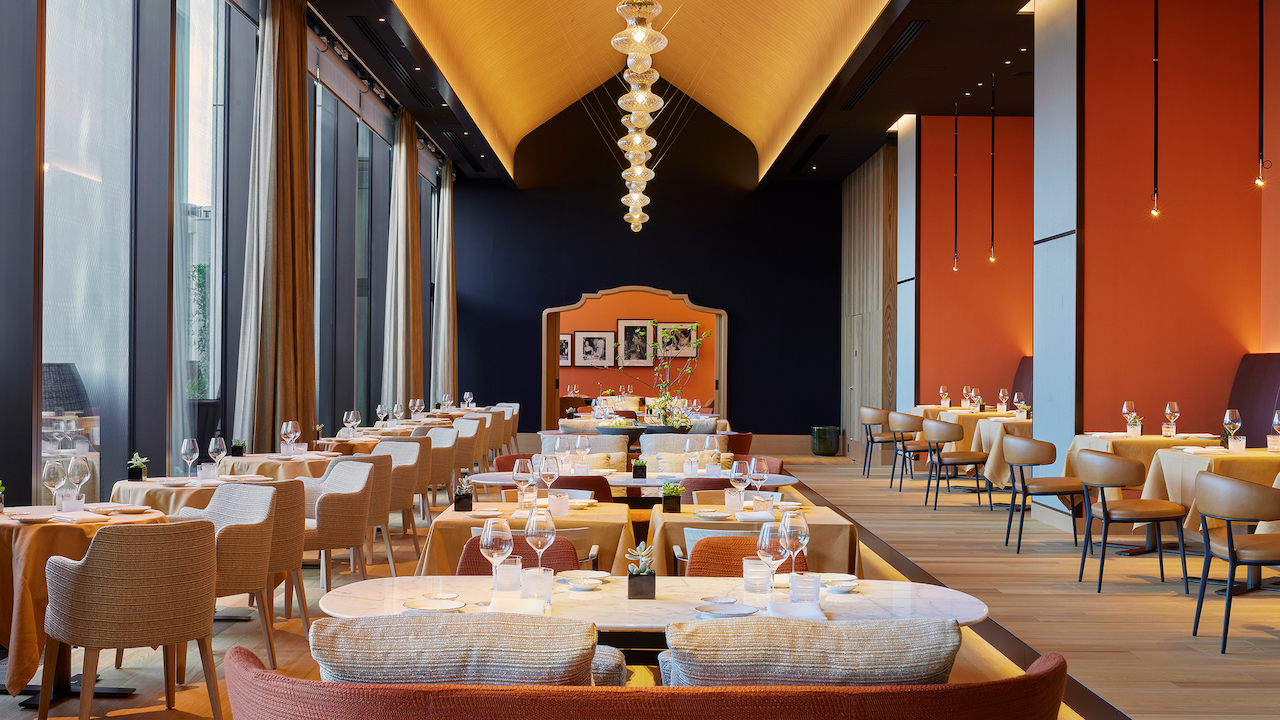
Designed by Antonio Citterio and Patricia Viel of ACPV Architects, Bvlgari Hotel Tokyo has been ranked highly on the beauty and craft scale since it opened at the 40th to 45th floors of the Tokyo Midtown Yaesu skyscraper. On the lobby level is the one-Michelin-starred Niko Romito serving authentic Italian cuisine like Antipasto all’Italiana, spaghetti pomodoro, and Cotoletta alla Milanese.
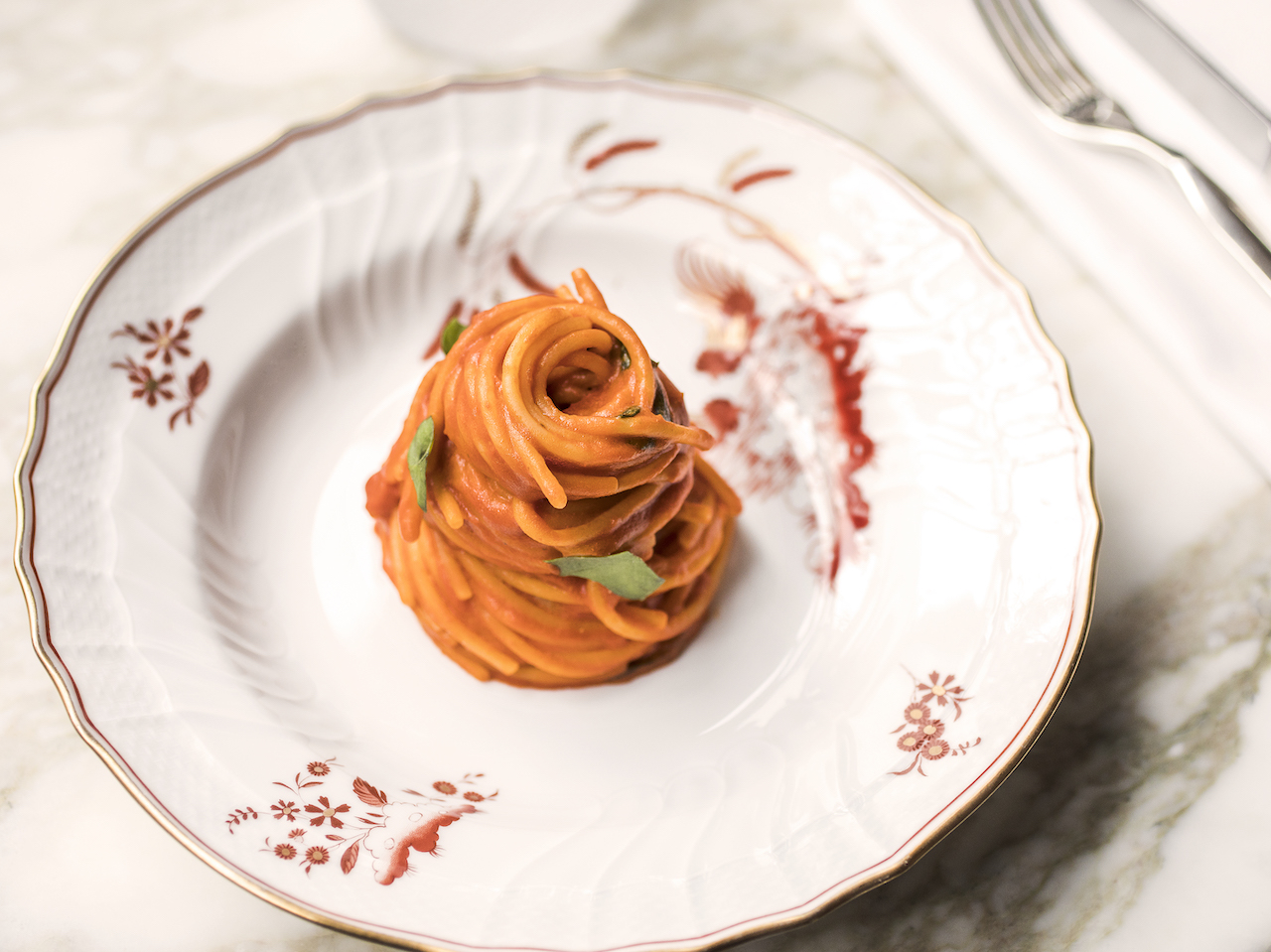
A curved timber ceiling and elm wood portals reference the shape of doors and windows of traditional Japanese wood temples known as katomado. It caps the tall ceiling and adds drama to the restaurant’s long volume. Warm saffron-coloured walls, and nature-toned furniture evokes a homely atmosphere, contrasted with columns in mesh metal whose herringbone pattern is evocative of Japanese Nishijin silk fabric and tatami mats.
Suspended glass pendants hand blown in Murano by Barovier & Toso, as well as Maxalto chairs and sofas finished with Dedar fabrics, bring across the refined spirit of Italian craft. Champagne-gold sheer curtains soften the sharp design elements and frame a terrace with sky-high views.
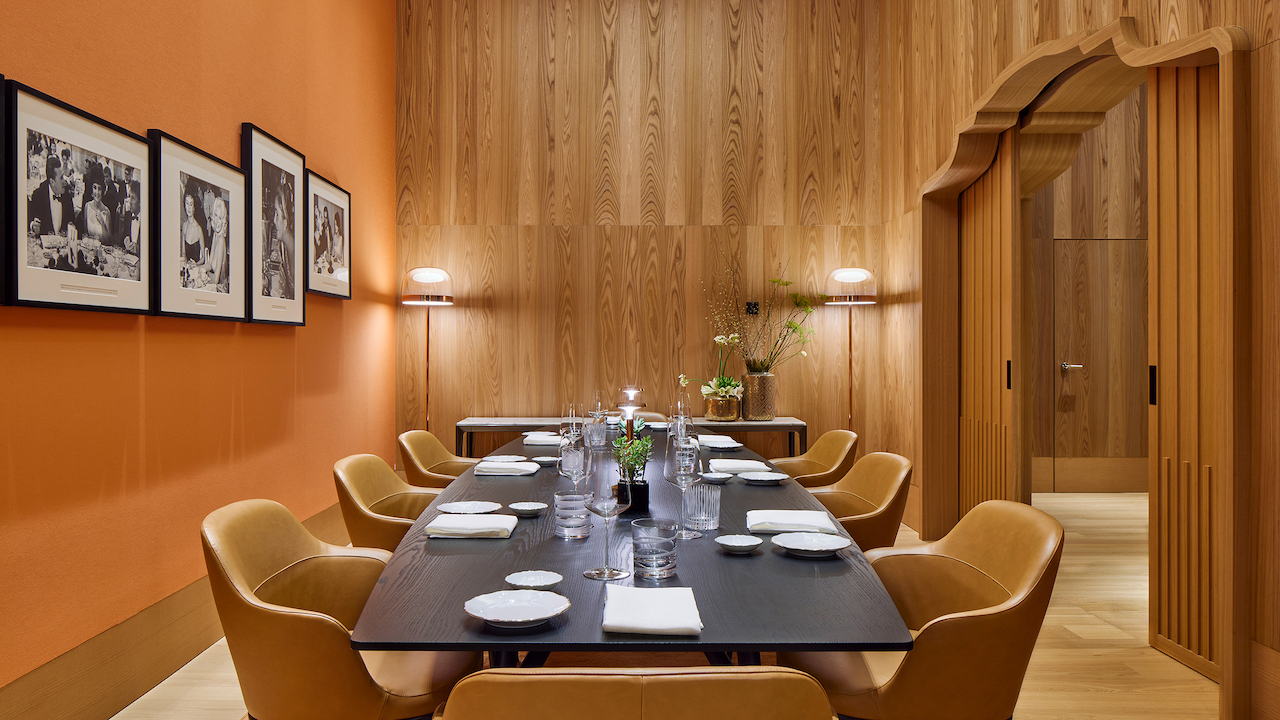
In the eight-seater intimate private room, a 1950s-designed table by Italian design maestro Gio Ponti in the 1950s and re-edited by furniture brand Molteni is an anchor. Surrounding it, black-and-white framed pictures from the la Dolce Vita historical period align with Bvlgari’s brand and history.
___
Opened on 1 April this year, Capella Taipei brings a new level of luxury to Taipei’s hospitality scene. It is located along Dunhua North Road, where a promenade of century-old trees elevates the hotel’s presence. The interior design by André Fu inspired by a ‘modern mansion’ pays homage to both the city and the vicinity, with a blend of refined cosmopolitan vibes and distinct cultural nuances.
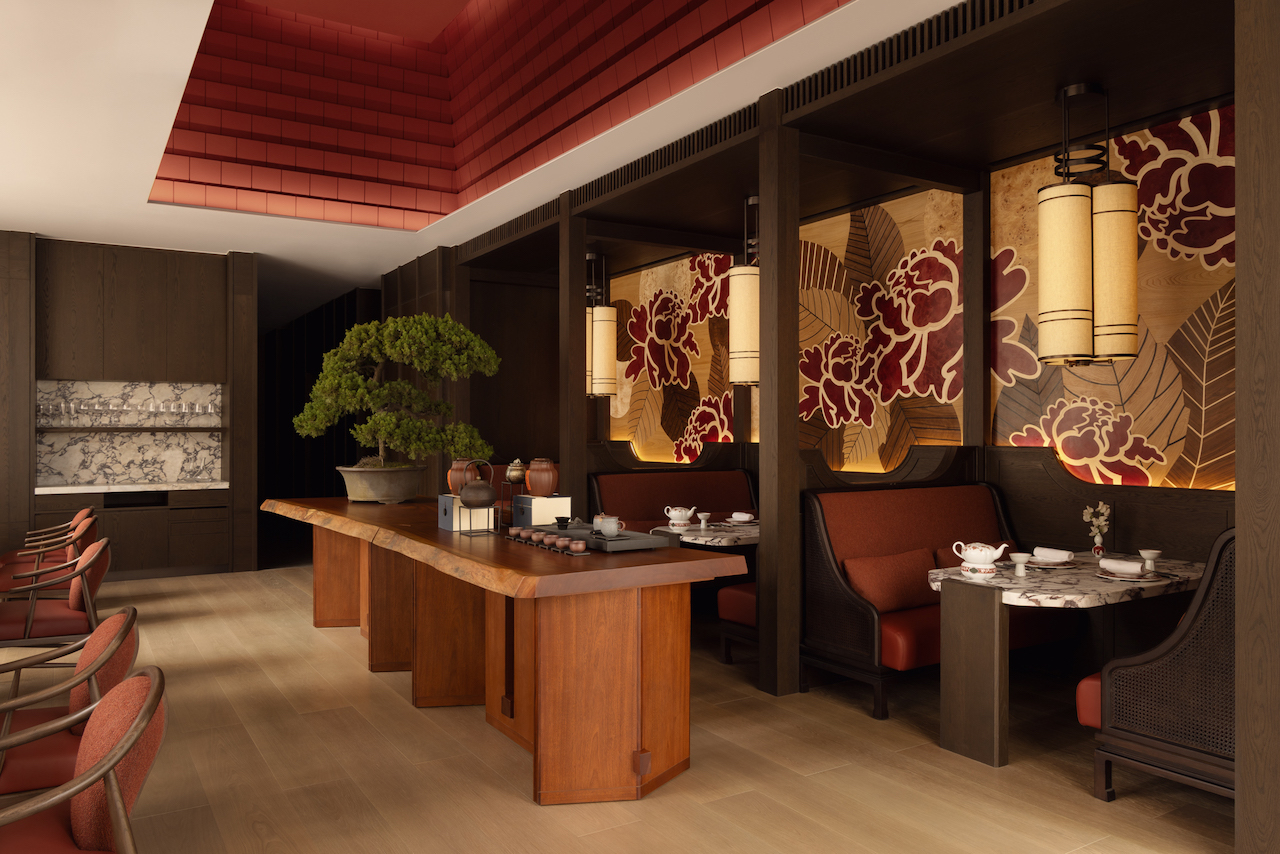
Rong Ju, which offers classic Cantonese cuisine, is one of the destinations in this grand manor. Fu has reinterpreted the neighbourhood’s traditional red-roof architectural elements into memorable accents such as a dramatic eight-metre-high pitched ceiling, cloaked in terracotta red tiles.
Guiding the design is the spirit of two ancient Banyan trees in the locale, reflecting strength, wisdom and timeworn beauty. A handcrafted, eight-metre-wide marquetry wall with bold, expressive peony and foliage motifs interwoven into a lush backdrop symbolises prosperity and writs large nature’s inspiration in the narrative.
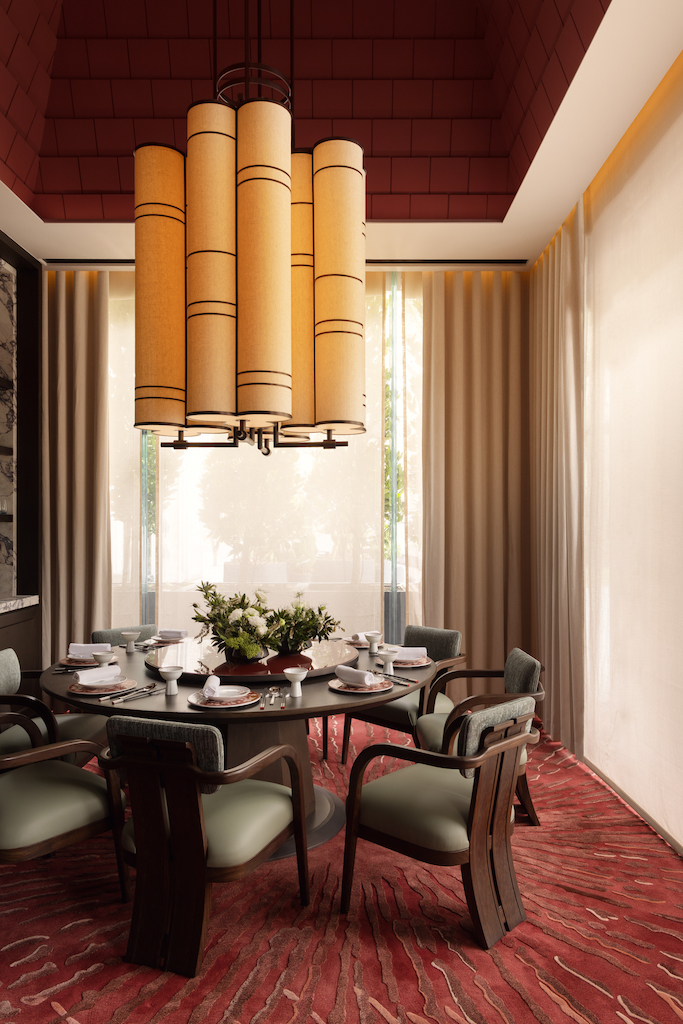
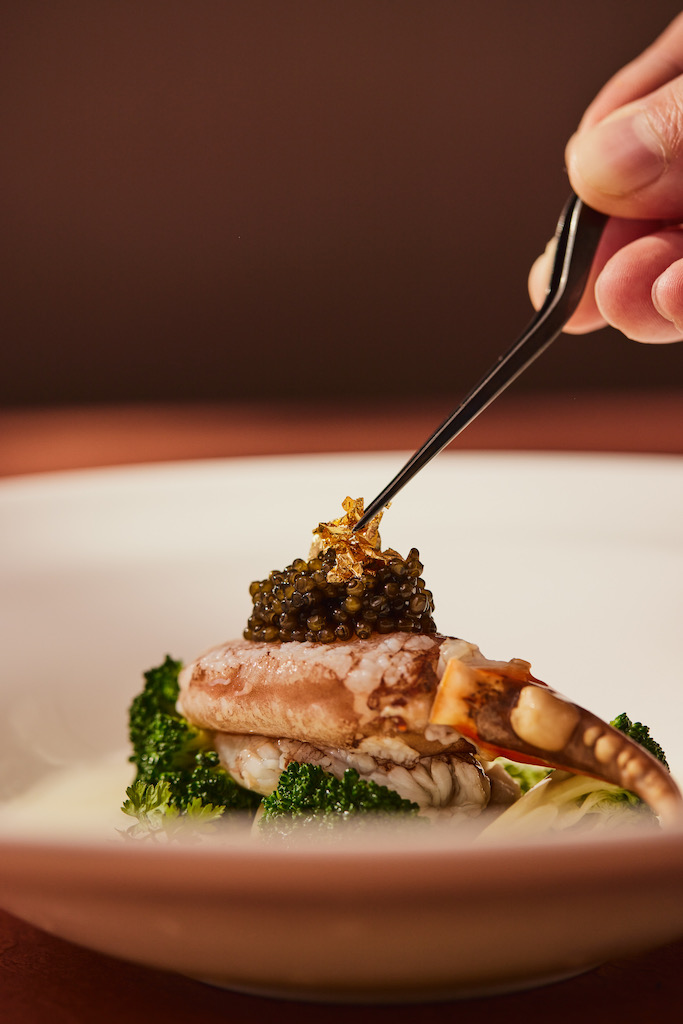
These features are in-filled with high-gloss, burgundy panels and bespoke lantern pendants that add a sculptural quality to the spaces. Patrons can enjoy classic roasted meats, nourishing double-boiled soups and other specialties conceived by Chef Kwok Wah Chan. His over 30 years of culinary experience introduces highlights like steamed crab claw.
___
Bornyon, Gangnam, Seoul
High above Gangnam’s glitzy streets, Bornyon offers meals topped with a panoramic backdrop of the setting sun – whose colour echoes in the peach colour of Series 7 and Swan chairs from Danish furniture manufacturer Fritz Hansen. An outdoor terrace brings cocktail hour outdoors to further enjoy the spectacle.
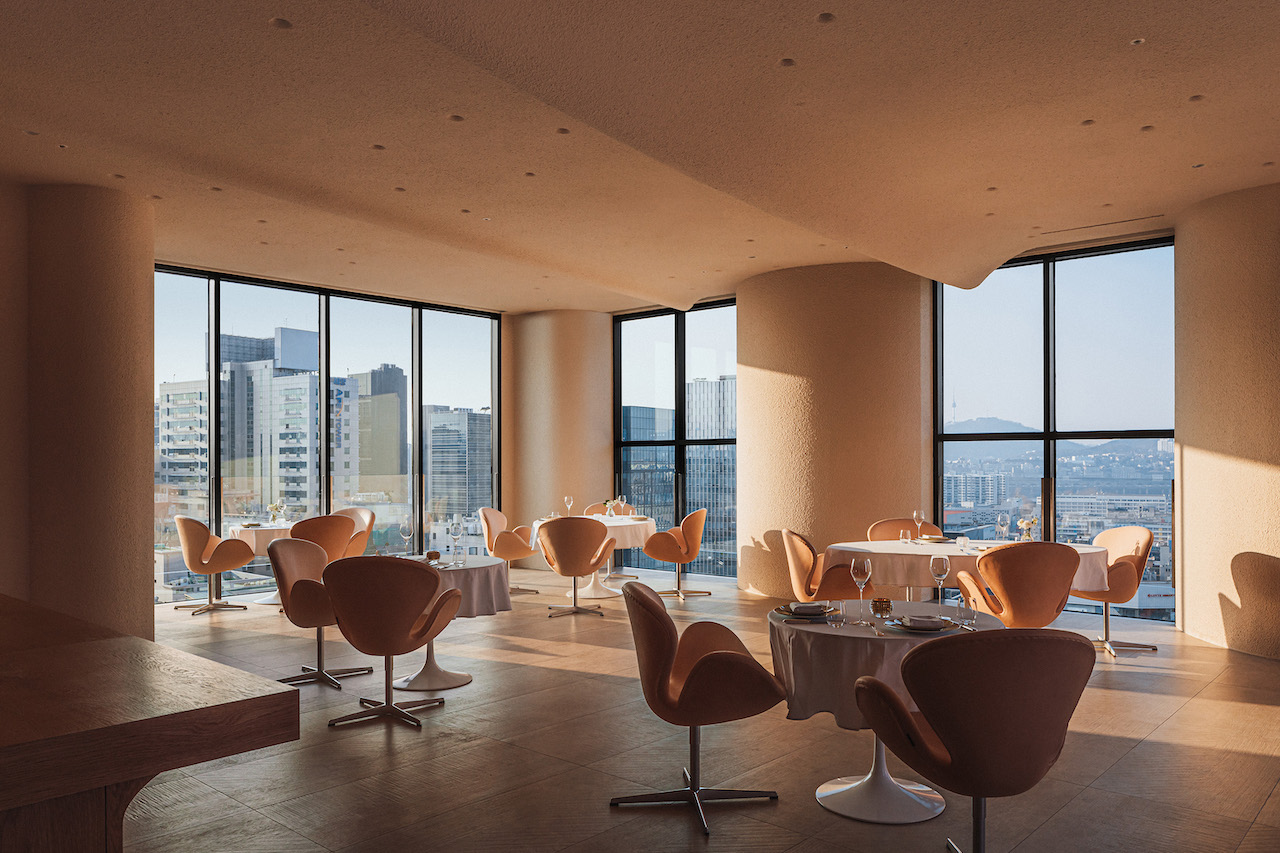
South Korean entrepreneur and founder of real estate developer company PLAYA Youngkown Kim conceived the idea of a restaurant using the Swan chairs when he sat on one while at the Savor Vals restaurant within Swiss architect Peter Zumthor’s Therme Vals in Switzerland. The chairs’ long-time comfort and lasting aesthetic beauty struck a cord, resulting in Bornyon.
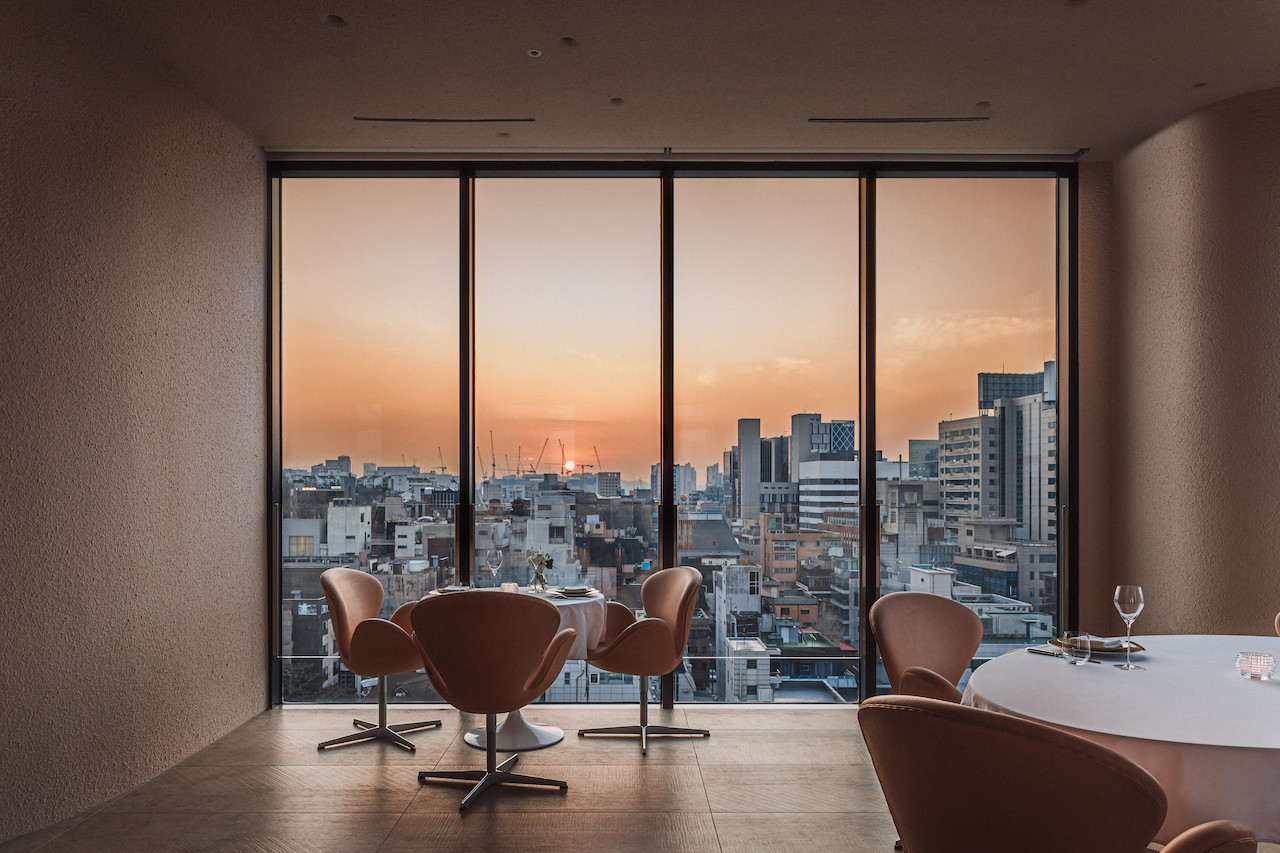
The restaurant embodies the idea of timeless design centred on the cuisine of Korean woodfire and fermentation in inventive dishes thought up by Chef Bae Kyung-Jun. One of the signature dishes is ‘Wild duck, Bokbunja, Strawberry’ which sees charcoal-grilled, two-week-aged game paired with fermented red cabbage, cardamom and caraway seeds.
“The crucial element in this space is time – the feeling of time passing, the sensation of time standing still, the ambience of sunset and occasionally, an environment where the background fades away, allowing focus on cuisine and conversation,” explains Geonyoung Kang, the CEO at A-D-O Design Architecture Office.
___
Keiyo, Soori Bali
Tucked between the Mount Batukaru and terrace rice fields, bordering glistening volcanic black sand beaches and dramatic cliffs, Soori Bali is anchored by nature. These forces are witnessed in their wild glory from the vantage of a new eight-seater, cliff-top teppanyaki restaurant, Keiyo.
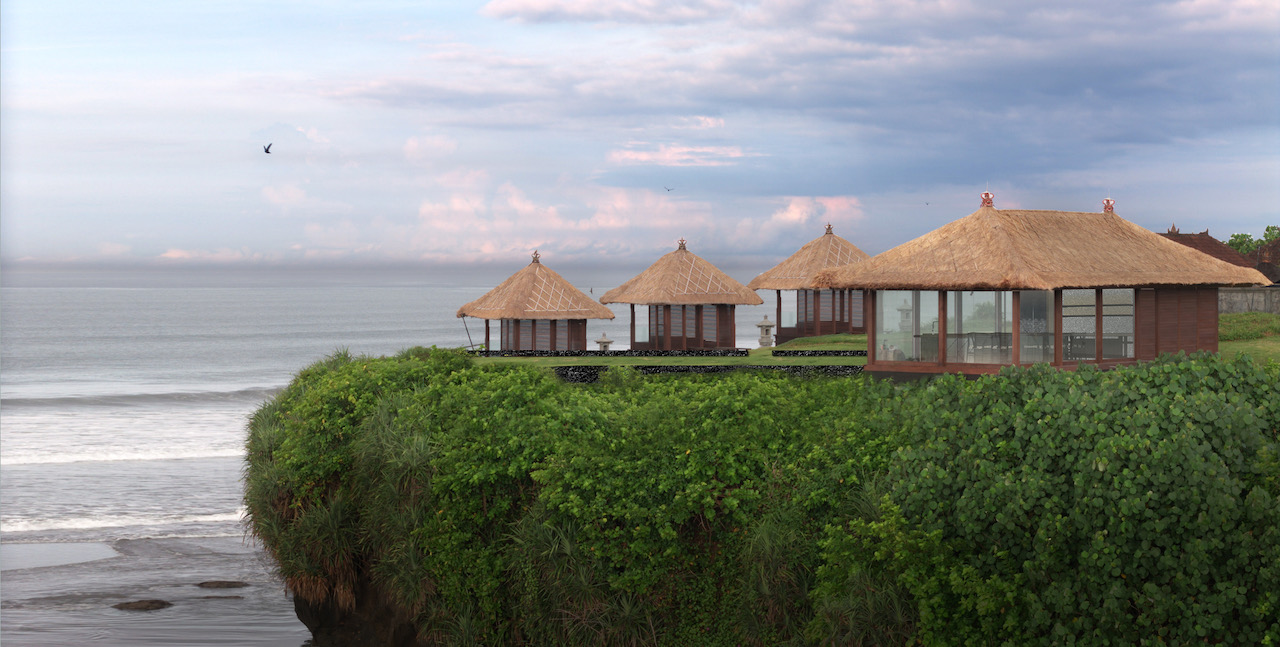
It was designed by Soo K. Chan, who is also the architect, developer and hotelier for Soori Bali. The Soori brand is his passion project, and apart from Soori High Line in New York, he will soon welcome Soori Heritage Penang in Malaysia into the fold.
Opened in April, Keiyo offers set menus with inventive interpretations of teppanyaki favourites such as wagyu steak and premium seafood. “I wanted to have an intimate speciality restaurant that is a bit away from the main hotel. The location offers dramatic cliff views as well as the mountain view to the back,” describes Chan who chose the teppanyaki concept as it is “interactive and keeps the guests engage.”
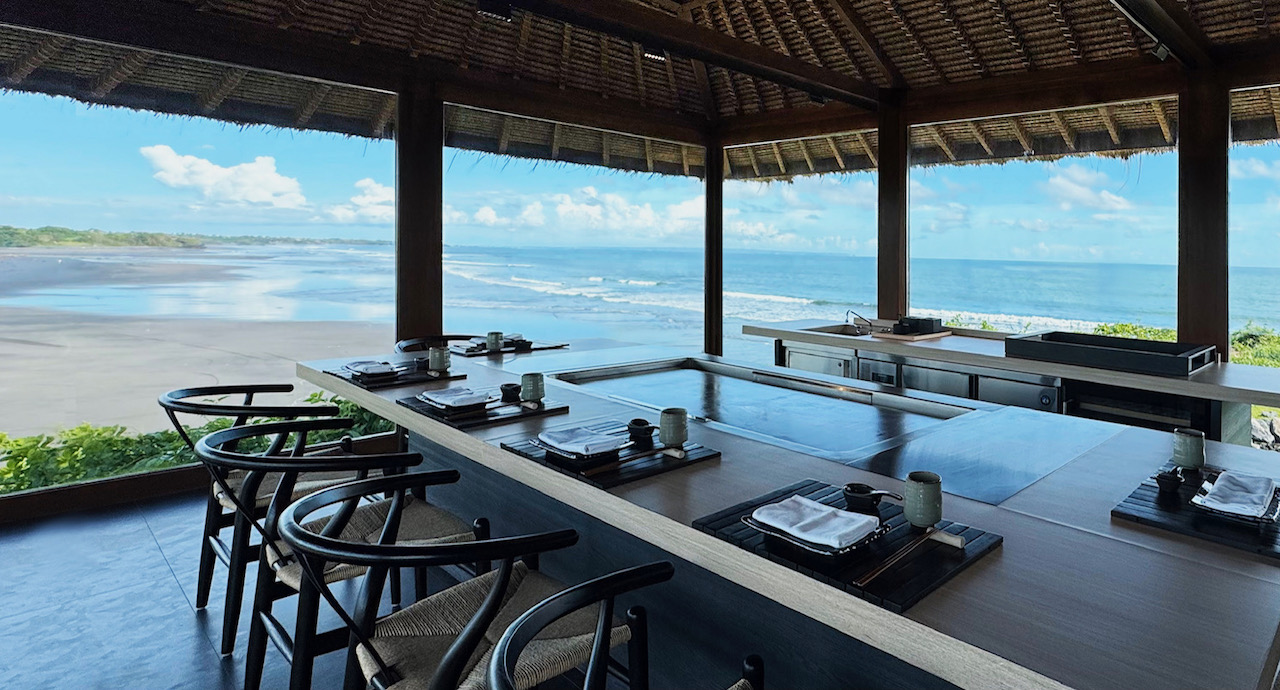
The pavilion-like restaurant melds Japanese and Balinese architecture with timber framing and a thatched roof. Dark granite tiles underfoot match Wishbone chairs from Danish brand Carl Hansen & Søn, whose black oak frame and trademark woven paper cord seats reflect the hotel’s modern-tropical aesthetic.
